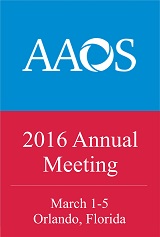
AAOS 2016: Radiofrequency microtenotomy vs. open release surgery for lateral epicondylitis .
Open Release vs. Radiofrequency Microtenotomy (RFMT) in the Treatment of Lateral Epicondylitis
41 patients with lateral epicondylitis were randomized to receive either standard open release surgery or radiofrequency microtenotomy (RFMT) as treatment. The purpose of this study was to determine if one treatment was significantly more beneficial when evaluating decrease in pain, improvement in grip strength and improvement in functional scores. Results demonstrated that although pain and functional scores significantly improved when compared to pre-treatment measurements, patients in both study groups showed mostly comparable outcomes at all follow-up points.
Unlock the Full ACE Report
You have access to 4 more FREE articles this month.
Click below to unlock and view this ACE Reports
Unlock Now
Critical appraisals of the latest, high-impact randomized controlled trials and systematic reviews in orthopaedics
Access to OrthoEvidence podcast content, including collaborations with the Journal of Bone and Joint Surgery, interviews with internationally recognized surgeons, and roundtable discussions on orthopaedic news and topics
Subscription to The Pulse, a twice-weekly evidence-based newsletter designed to help you make better clinical decisions
Exclusive access to original content articles, including in-house systematic reviews, and articles on health research methods and hot orthopaedic topics































































